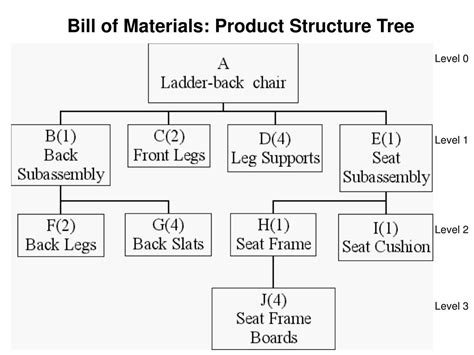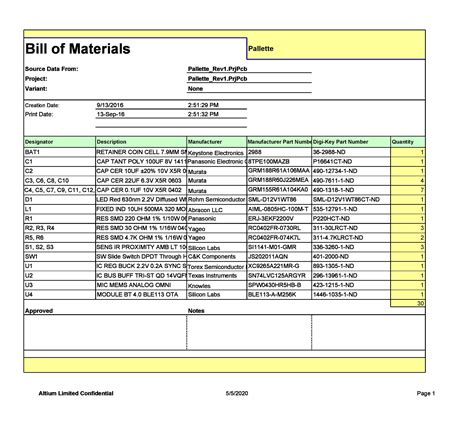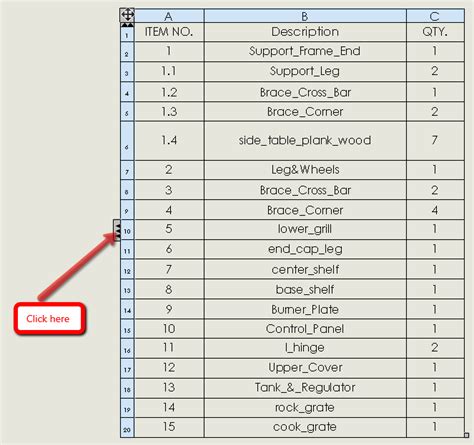Understanding the Purpose of a Bill of Materials
A Bill of Materials (BOM) is an essential document used in various industries that lists all the materials, components, and assemblies needed to manufacture a product. The BOM provides detailed information about each item, including part names, part numbers, quantities, and descriptions. Furthermore, it typically includes other essential information such as cost and lead time for each component. The BOM is created during the design stage of the product and is amended as changes are made to the design.
The BOM serves as a communication tool that helps teams ensure that all the necessary parts and assemblies are available when they are needed in production. It is a vital reference document that allows manufacturers to track and monitor all the components that go into making a product. Without a BOM, the production process would be inefficient as manufacturers would have to rely on guesswork, resulting in discrepancies in the end product.
BOMs are not only used during the manufacturing stage of a product but are also essential in the maintenance process. The BOM helps the service team to identify the exact parts needed to service and repair the product, ensuring that the correct components are ordered from suppliers. By doing so, it reduces the time and cost of maintenance activities. Without a BOM, it would be very challenging to ensure original parts are used for maintenance, which could result in unsafe and inefficient repairs.
In summary, BOMs are critical documents that help ensure that products are built correctly and safely. They enable manufacturers to know precisely what parts will be required and in what quantities at every stage of the production process. Equally important, they help ensure that repairs and maintenance are carried out safely and efficiently, using the correct components. Creating a BOM is an important aspect of product design and development, and it is vital that it is kept up-to-date throughout the production process to ensure that the final product is built perfectly and meets all the requirements.
Identifying the Components and Parts Needed
Creating a bill of materials involves a thorough understanding of the product being manufactured or assembled. There are various ways to identify the components and parts needed, but the most commonly used method is through a product breakdown structure. This structure is a hierarchical representation of the product, separating it into smaller components and parts until each item can be easily identified.
The first step in identifying components and parts is to review and interpret engineering drawings or specifications. These drawings provide detailed information on dimensions, tolerances, materials, and finishes. It is important to take note of the part numbers and descriptions as they will be used in creating the bill of materials.
Another way to identify components and parts is to conduct a physical examination of the product. This is a useful method for products that do not have engineering drawings or where the drawings are incomplete. This examination should be done by a qualified personnel who is familiar with the product and its component parts. They should take note of any markings or labels on the parts and record their measurements and specifications.
When creating a bill of materials, it is important to ensure that each item is listed only once. This means that each component or part should have a unique part number and description. Any duplicate parts can cause confusion and lead to errors in production planning, ordering, and inventory control.
In addition, it is also important to take into account any special requirements or considerations for the components and parts. These may include regulatory compliance, specific tolerances, or unique finishes. These requirements must be clearly indicated in the bill of materials to ensure that they are met during production.
Once all the components and parts have been identified, it is important to verify that the bill of materials is complete and accurate. This can be done through a thorough review by a qualified personnel. Any errors or omissions must be corrected to avoid any production delays or quality issues.
In conclusion, identifying the components and parts needed for a bill of materials requires a detailed understanding of the product and its specifications. A product breakdown structure is the most common method used to identify components and parts. It is important to ensure that each item is listed only once, and any special requirements or considerations are indicated. A thorough review and verification of the bill of materials is essential to avoid any production delays or quality issues.
Organizing the Bill of Materials Structure

Creating a bill of materials is an essential task in any manufacturing or production process. It is a comprehensive document that lists all the materials needed to build a finished product. However, organizing a bill of materials can be a daunting task, especially if it involves a lot of parts and components. Here are some tips on how to organize the bill of materials structure to make it more streamlined and efficient:
1. Group Parts Together

The first step in organizing your bill of materials is to group parts together. This is especially important if you have a large number of components. For example, if you are making a car, you could group all the nuts, bolts, and screws together, all the electrical components together, and all the engine components together. This will make it easier to find the parts you need and reduce the risk of missing something.
2. Use a Standard Format

Using a standard format for your bill of materials will make it easier to read and understand. You can choose a format that works best for your needs, such as a table or a spreadsheet. Make sure to include all the necessary information, such as part numbers, descriptions, quantities, and unit costs. This will help you keep track of your inventory and ensure that you have enough materials to complete your project.
3. Number Your Parts

Numbering your parts in your bill of materials is a great way to keep track of them. This is especially useful if you have a large number of components. You can use a sequential numbering system or a hierarchical numbering system, depending on your needs. A sequential numbering system assigns a unique number to each part in the order it appears in the bill of materials. A hierarchical numbering system groups parts by subsystems and assigns a number to each subsystem, followed by a number for each part within the subsystem. Either way, numbering your parts will make it easier to find and reference them.
4. Include Subassemblies

A subassembly is a group of parts that are assembled together to form a larger component. Including subassemblies in your bill of materials will make it easier to manage your inventory and assembly process. You can list the parts that make up each subassembly separately and then group them together under a subassembly header. This will help you ensure that you have all the necessary parts for each subassembly and that you assemble them correctly.
5. Add Notes and Instructions
%3aformat(webp)%3awith_compression()%2fwhat-is-a-bill-of-materials-bom-1073584-4-3a8c99087cd1446daedc074d92600cff.jpg)
Adding notes and instructions to your bill of materials will help ensure that your assembly process goes smoothly. You can include information on how to assemble each component and any special instructions or precautions that need to be taken. This will help you avoid mistakes and reduce the risk of delays or errors.
By following these tips, you can create a well-organized bill of materials that will make your manufacturing or production process more efficient and effective.


